
Cesar Medina Davila is a conservation biologist and the founder of Wildlife Nomads, a hub for researchers, students, and wildlife enthusiasts.
The first time I heard a kookaburra, I thought someone was playing a recording of monkeys. It was my second day in Australia, and I was standing in the suburbs of Sydney, jetlagged and confused, staring up at a tree. Then I saw it: a chunky, unimpressed-looking bird with a dagger for a beak, laughing at me. Welcome to Australia, I guess.
I didn’t plan to care about birds. I definitely didn’t plan to become a nomad. But somewhere between watching a California condor soar over Baja California, counting blue tits in a freezing Swedish forest, and spotting my first black cockatoo in the Australian bush, I realized: birds had been teaching me how to move through the world. Not as a tourist. Not as someone passing through. As someone who belonged, even if only for a moment.
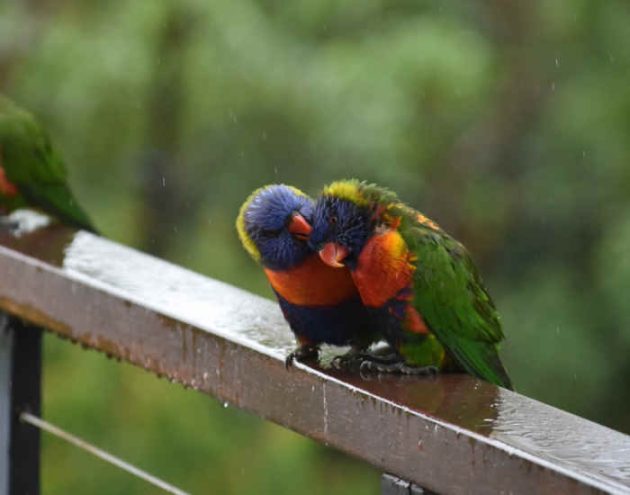
Rainbow Lorikeets, Australia, 2024 | Photo by Cesar Medina Davila
Mexico: Learning to See What Was Always There
As a biology student in Mexico, I was introduced to fungi, biochemistry, plants, all the pieces of the living world that professors insisted were worth noticing. Some of them stuck. Some didn’t. Birds? They were just background noise. Until a friend changed that.
He was a classmate who eventually became an ornithologist, and he had this quiet obsession with birds. He’d organize personal birding walks and invite anyone who was curious enough to tag along. I went once, mostly to be polite. Then I went again. And again.
He taught me how to listen, not just hear, but actually distinguish one song from another. He showed me how certain birds preferred specific trees because of their food sources, how some species would stand or perch in particular ways, how their flight patterns could identify them before you even saw their colors clearly. I’d walk past the same trees every day for years, and suddenly they were full of birds I’d never noticed.
The moment that really hit me was during a field trip to Baja California. We spent three weeks in the mountains with Terra Peninsular, an organization working on conservation in the region. One of their projects was the California Condor reintroduction program, a species that had been on the edge of extinction, brought back through painstaking effort.
A few days into the trip, we saw one. It was soaring above us, tagged, unmistakable. I remember staring up at it and thinking: We almost lost this. We almost killed them all. And then we decided to care.
That condor wasn’t just a bird. It was proof that we could reverse the damage. That conservation wasn’t just a word in a textbook; it was real, fragile, and possible.
By then, I’d already lived in five different states in Mexico. I was always moving. But I didn’t think of myself as a migrant. Not yet.
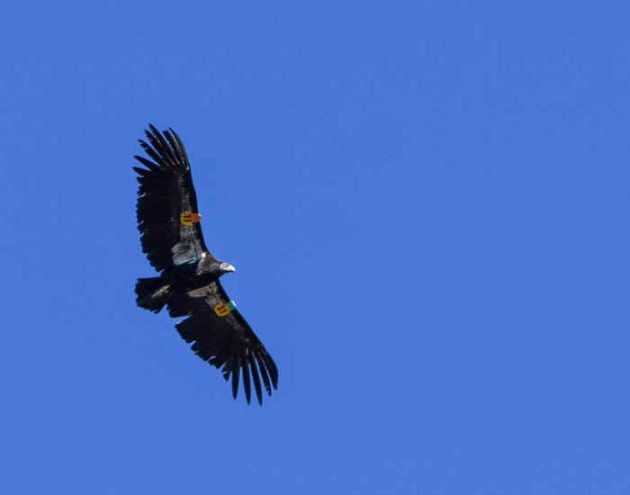
California Condor, Baja California, 2019, Photo by Cesar Medina Davila
Sweden: The Unexpected Lesson in Fear
I arrived in Sweden thinking bird life in northern Europe would be… boring. Cold. Quiet. Not much to see.
I was wrong.
I was there for a year as part of an exchange program. For one month, I helped a PhD student with their fieldwork, studying how birds reacted to predators depending on food availability. The setup was simple: watch birds, introduce a stuffed predator, see what they did. Count everything. Repeat.
Most of what we saw were Blue Tits. Small, colorful, common. The kind of bird you’d ignore if you weren’t paying attention. But I was paying attention, I had to. I watched how they moved, how they fed, how they reacted when the fake predator appeared.
And I saw fear.
Not abstractly. Not as a concept. I saw birds change their behavior because they were scared. They hesitated. They scanned. They chose safety over food. It wasn’t a dramatic shift; the data showed it was barely significant, but I could see it. I could feel it.
Fear is universal. I know fear. Birds know fear. And in that freezing Swedish forest, counting tits for hours at a time, I realized: we’re not that different. We’re all just trying to survive, to eat, to avoid being eaten. That connection — that empathy — made me care in a way I hadn’t expected.
I also saw owls that year. Owls are my favorite birds, always have been. And I saw puffins in Iceland during a break. But it was those Blue Tits, those endless hours of observation, that taught me something I hadn’t learned in a classroom: you can understand a bird by watching it closely enough. And once you understand it, you can’t help but care.
By then, I was fully nomadic. Sweden, then somewhere else, then somewhere else. I didn’t feel rootless. I felt like a bird on a stopover, resting, feeding, watching, then moving again.

Biological Station is on the Swedish West Coast, 2017 | Photo by Cesar Medina
Australia: The Omen in the Bush
Australia hit differently.
The kookaburra was just the beginning. On that same day, I saw galahs and white cockatoos and rainbow lorikeets, all of them loud, colorful, chaotic. It was overwhelming in the best way. But the bird that really stayed with me was the black cockatoo.
I’d been living in Sydney for over a year when I finally saw one. I was on a field job northwest of the city, and I heard them before I saw them, a deep, creaking call that echoed across the bush. Then they appeared: dozens of them, huge and dark, their wingbeats revealing flashes of orange-red and pale yellow against the sky.

A coworker told me that in Aboriginal culture, spotting a Black Cockatoo is considered a good omen. I didn’t know if that was true for me, but I watched them in awe anyway. There was something about their size, their presence, their noise; they felt ancient. Powerful. Like they’d been here long before I showed up and would be here long after I left.
Later, I spent three months in Western Australia. Black cockatoos — Carnaby’s Cockatoos, specifically — became regular sights. They’d feed noisily in banksia woodlands and pine plantations, tearing apart cones with their massive beaks. I saw them in the suburbs, too, just flying overhead like it was nothing.
Every time I spotted one, I felt grateful. Not in a sentimental way. Just… grateful. That they were still here. That I got to see them.
These birds depend on the landscapes they inhabit. They need old trees, specific food sources, safe places to nest. And those things are disappearing. But they’re still here. Still feeding. Still calling. Still showing up.
Just like me, I guess.
Migration as a Natural Right
I never set out to be a nomad. I never planned to care about birds. But the more I moved, the more I noticed: birds do this too. They migrate. They adapt. They show up in places that don’t “belong” to them and make it work anyway.
A condor learning to fly again in the mountains of Baja California. Blue tits navigating fear in a Swedish winter. Black cockatoos surviving in fragmented Australian bushland. They’re all just trying to live, to find food, to keep going.
Migration isn’t just for birds. It’s a natural right, a way of being alive that doesn’t require permission or permanence. You land. You learn. You adapt. You move. And if you pay attention, the birds will teach you how.
I’ve lived in Mexico, Sweden, Australia. I’ve studied fungi, biochemistry, plants, marine life. But it was birds, those background creatures I once ignored, that taught me the most important lesson: you don’t have to stay in one place to belong. Home is wherever the people you love are. Home is wherever you go, if you feel whole.


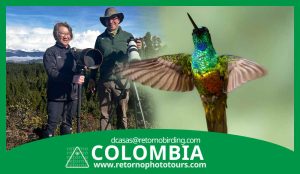

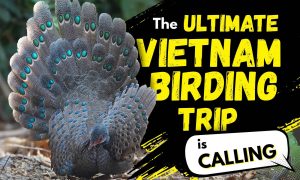
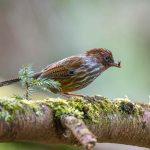
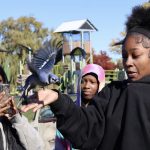




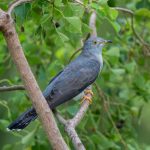
Leave a Comment